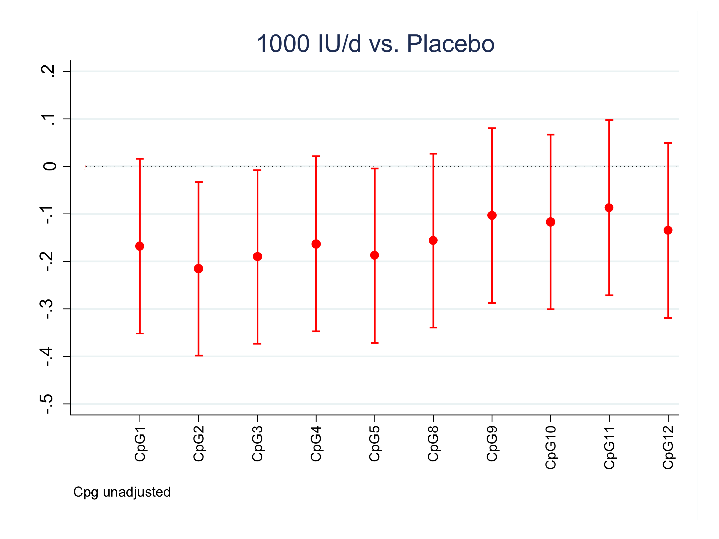Working in close collaboration with colleagues at the University of Southampton Institute of Development Sciences, we have demonstrated, using a genome-wide to candidate approach, two key targets in relation to bone outcomes: CDKN2A and RXRA. The former is important in cell senescence and SNPs within this locus have been associated with cardiometabolic disease; RXRA forms a heterodimer with the vitamin D receptor and is a key part of vitamin D nuclear signalling. Thus methylation at CpG loci within CDKN2A in umbilical cord was associated in discovery and replication cohorts in the Southampton Women’s Survey with offspring bone mass at 4 and 6 years. Subsequent investigations confirmed the functional relevance of these sites. In the Southampton Women’s Survey, perinatal epigenetic marking at RXRA was associated with both offspring bone mass and an estimate of maternal free 25(OH)-vitamin D status. Confirmatory findings have come from the MAVIDOS trial [Figure], in which we demonstrated that maternal vitamin D supplementation during pregnancy resulted in a reduction in umbilical cord RXRA methylation compared with placebo, with demonstration of associations between RXRA methylation and offspring bone mass. Furthermore, addition of 25(OH)-vitamin D to placental cell cultures led to a reduction in RXRA methylation. Our ongoing work will further characterise these mechanisms and their functional relevance across bone and muscle tissue, and establish novel targets from further epigenome-wide investigations, linking with Programmes 1 and 5 to establish associations relevant across the lifecourse, and to inform potential novel interventions.

